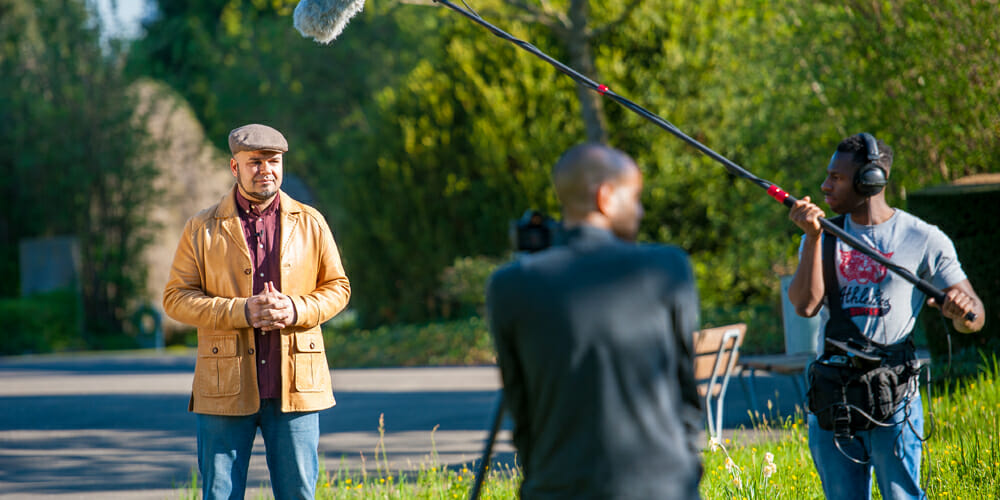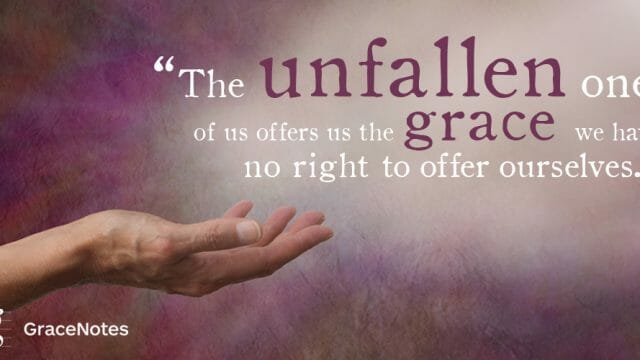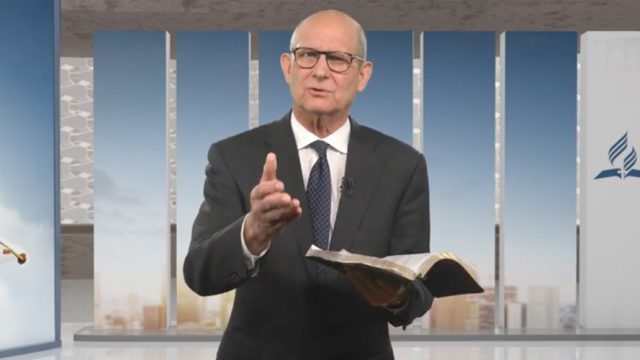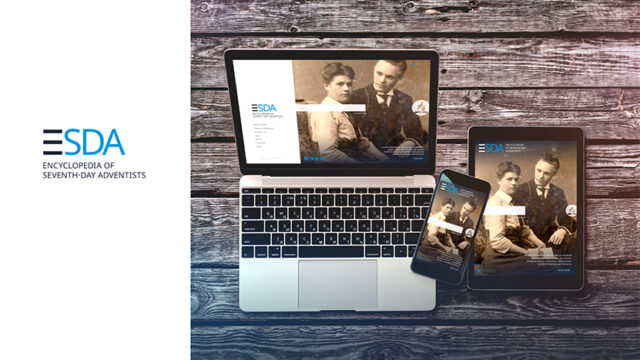How Adventists are using history with biblical principles to reach secular audiences.

“No way!” thought Samppa Muchenagumbo, an 11-year old Adventist student at St. Thomas Moore Catholic School in Blaydon, England.
It had seemed like an ordinary school day until his Religious Education teacher announced the class would watch a short video. The teacher, a self-proclaimed atheist, wanted his students to use the ideas in the video to expand their thinking.
Muchenagumbo often struggled when the secular ideas presented in class conflicted with his beliefs. So he prepared himself for another of those experiences. The teacher explained that he had found “Holy Island and Aidan”, which is episode 3 in the Lineage Journey series on YouTube. Muchenagumbo wondered if he had heard right.
As the video played, Muchenagumbo could barely stop himself from blurting out what he was thinking: “I know the speaker in that video! He’s Adam Ramdin, a pastor at my church!”
Ramdin is the North England Conference of Seventh-day Adventists youth director based in Nottingham, England. He and Clive Coutet, an Adventist filmmaker, have a burden to create educational resources that delve into Adventism’s spiritual heritage and show the connection between the past and the present.
The two men and their team have spent several years developing Lineage Journey. The video series explores the little-known connections and backstories in the development of the Adventist Church as well as the growth of Christianity itself.
The Beginning
While Coutet was majoring in film and video production at the University of West London, he saw a lack of modern-day resources available to young people on Christian and Adventist church history.
“I’m creative and passionate about digital evangelism using the gifts God has given me,” Coutet said. “While I was reading The Great Controversy [by Adventist Church co-founder Ellen G. White], I really wanted to visualize some of the places. I struggled to find quality materials on these topics and felt the burden to bring some of this amazing history to life. The spark was lit in my mind, and I guess you can say that the rest is history,” he added with a smile.
In July 2016, Coutet and Ramdin, along with their wives and families, toured the British Museum in London. Afterward, Coutet asked Ramdin if he wanted to do some filming in the British Museum and various historic places around London that are mentioned in The Great Controversy.
Ramdin liked the idea, and quickly the idea became a project.
The Team
In order to grow the project, Coutet and Ramdin needed a professional, committed team. Consistently, God brought the right people at just the right time, they said. Initially, Coutet’s father, an experienced cameraman and photographer, assisted with filming. Coutet’s friend Ashley Bloom, a media professional, photographed the sites they filmed.
Then Jasper Iturriaga, a videographer and photographer from the Philippines, joined as the second cameraman. “It has always been my passion to visualize the history of the church as a way of reaching young people in the most relevant and engaging way,” Iturriaga said. “I believe that by providing them with resources they would actually watch, vital questions like who we are as a church could be answered.”
Later, Anton Stewart volunteered his media expertise and became head of social media and audio. Others such as website content manager Sukeshinie Goonatilleke sought out the team. “When I saw Lineage, I resonated with the vision. I related to the idea of using history and The Great Controversy as an educational tool and means of drawing people to have spiritual and meaningful conversations,” she recalled.
Assistant editor Charlene Coutet, head of translations and assistant producer Aiko Ramdin, and behind-the-scenes producer Eden Matheson round out the team.
Each of these volunteers — all young professionals with a goal of spiritually nurturing their generation — has sacrificed much for the project. This spirit was needed to launch the project and continues today, Ramdin said. Perhaps this is one of the reasons the team is so appreciative of the feedback they’ve received.
The Response
“We didn’t expect the response,” Coutet noted. “On Facebook, the first video was shared hundreds of times, all over the world. Some of the feedback mentioned that they appreciated the short format, the high-quality editing and production, and the appeal at the end.”
Season 1 focused on Christianity from the time of Constantine through to the end of the 1700s as the Reformation waned. “We followed a chronological journey showing how the truths of the Reformation were slowly rediscovered, and the sacrifice and dedication of the reformers,” Ramdin said.
He continued, “Season 2 was to show that Seventh-day Adventism didn’t form in a vacuum, but rather it was a continuation of the discovery of truth that had begun in the Reformation. As a church, we stand on the shoulders not just of our pioneers who forged a new movement but also the reformers who stood for God in an age when it was not popular or desirable to be a Bible-believing Christian. We wanted to show this connection between the Adventist church and the Reformation.”
Reaching Youth
While the audience ranges from children under the age of 10 to grandparents, the core group among their more than 8,000 Facebook followers defies marketing assumptions.
“Our largest demographic of viewers on Facebook is between the ages of 18 and 35, which is quite extraordinary,” Ramdin noted. “Some anecdotally say that young people are not interested in the past, but these figures strongly disprove that. People do want to know where they come from and what their spiritual lineage is.”
The Future
Because each video is short and engaging, the series is a resource for both the Adventist church and secular audiences. Pathfinder clubs, youth groups, and Adventist schools use the videos as history and religion supplements. Churches find that the short length makes the videos ideal for a Bible study, small group, or an entire congregation.
As shown in Muchenagumbo’s experience, non-Christian institutions and individuals are utilizing them as well. The potential to reach the unreached is unknown at this point, but the possibilities are exciting.
Now the team is looking beyond their original idea. “In the future, we plan to film another series that will cover the Old and New Testaments while telling the story of God’s people and the battle between good and evil through time,” Ramdin said. “This will involve filming in the Middle East, and we envision that it will excite even greater interest in the Bible.”








